1887–1959
Cotton to Silk
Cotton was a leading world industry in the 19th century and became a major Japanese export commodity, able to compete with England and the United States. Kanebo started out in this period as a successful cotton trading and textile company. Shifting later to production of silk thread and fabric, Kanebo’s modernization of silk reeling laid the foundation for silk as a priority Japanese national industry. The cornerstone of Kanebo’s worldwide business before World War II, silk also became the inspiration for Kanebo’s cosmetics business, and the use of silk extracts in cosmetics distinguished the Kanebo brand.
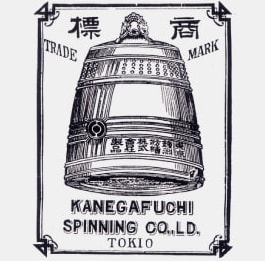
1887
Founded as Tokyo Cotton Trading Company, the firm changes its name to Kanegafuchi Spinning Company (Kanebo) in 1893.

1903
Japan’s First In-house Newsletter
1867–1934
Innovator and Reformer Muto Sanji
Emphasis on employee welfare transforms Kanebo into a productive and profitable company that serves as a model of good corporate practice.

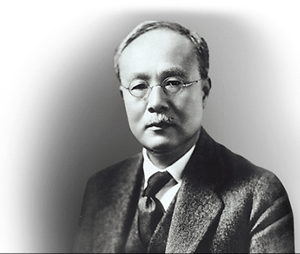

More
Muto Sanji (1867 – 1934) begins his career at Kanebo in 1894 as a 28-year old factory manager. He serves as managing director and president of the company from 1908 to 1930. Prior to joining Kanebo, Muto has worked in advertising, journalism, and banking. He later becomes a social reformer as a newspaper executive and member of the Japanese House of Representatives.
Under Muto’s direction, Kanebo transforms from a struggling business into Japan’s prototype of good corporate practice, achieving high productivity and profits by subscribing to the ideal of employee welfare. The company is said to have paid the highest wages, provided the best working conditions, and given the most extensive benefits in the nation. Muto’s “Kanebo Mutual Aid Society” pension and insurance system of 1905 becomes the basis of Japan’s first national health insurance law.
Muto is shot to death on March 9, 1934 after the newspaper he heads publicly denounces political and financial collusion and corruption.
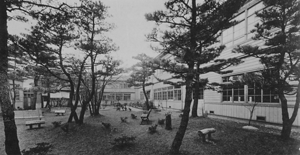


1905
Employee and Community Healthcare
Kanebo establishes a pioneering employee health insurance, opens an employee clinic, and founds a hospital that provides free medical service to the poor.
More
The Kanebo Mutual Aid Society, a company-sponsored health insurance program, becomes the model for Japan’s national health insurance system. In 1907, the first employee clinic opens at the Hyogo factory in Kobe. Eventually, in 1923, Kanebo establishes a hospital in Kobe that serves the community at large and provides free medical service to the poor.

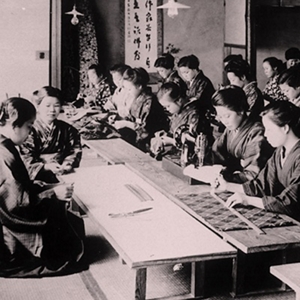

1905
Employee Education
Kanebo workers and their children are offered a range of education and training programs, including national compulsory elementary education.
More
Kanebo is early recognized as a humane company leading in the promotion of worker welfare. In contrast to abusive labor conditions that are the norm at the time, Kanebo introduces policies to attract and retain workers. Kanebo offers employees a range of opportunities centered on supplementary education for both male and female employees and their children. Kanebo’s first apprentice school in 1905 is directed at work-related training for male employees. The Kanebo School for Girls established in 1907, however, is designed to provide the equivalent of the six-year compulsory elementary education program. For those who have already completed compulsory education, Kanebo offers courses in its School of Practical Learning for Girls in subjects including ethics, Japanese language, mathematics, geography, history, science, and home economics. In addition, courses such as sewing, housework, and etiquette, are in line with emerging visions of middle-class womanhood and marriage. Such supplementary education offers Kanebo’s female workers life opportunities and protection.



1908
Silk Thread Production
Involvement in the production of silk thread, followed by silk fabric production and then raw-silk reeling operations, is instrumental in transforming the silk business into a major Japanese industry.
More
Kanebo shifts to silk thread production in 1908, silk fabric production in 1913, and raw-silk reeling operations in 1921. The Japanese government has placed a priority on developing the silk industry in order to increase exports to overseas markets. As the demand for high-quality Japanese silk grows in world markets, silk production becomes a key industry for Japan, representing roughly one-third of Japan’s entire commodity export earnings until 1930. Kanebo’s modernization of silk reeling is pivotal in transforming silk into a major Japanese industry.
1936
SAVON DE SOIE Silk Soap
A luxury soap formulated with silk oil extracts is Kanebo’s first skin care product. Its delicate design, pleasant scent, and beautiful packaging appeals universally to sophisticated women.
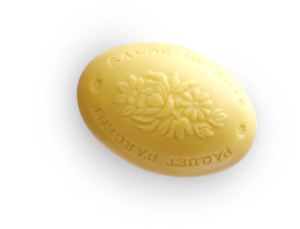
More
Kanebo introduces SAVON DE SOIE, its first skin care product, in 1936. This luxury soap formulated with silk oil extracts is exported to Europe — particularly France — and to the United States. Molded with a delicate design and packaged beautifully, it has a sophisticated scent and pleasant feel that attracts wide appreciation among sophisticated women. On the advice of designer Tanaka Chio, who had been dispatched to Paris to research the cosmetics market there, each bar is wrapped in a luxurious silk handkerchief and placed in a silver case.
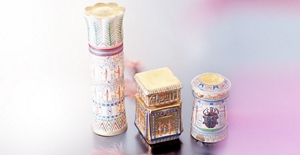
1939
Shift to Cosmetics Production
Following the launch of SAVON DE SOIE, the company gradually shifts to cosmetics, producing creams, lotions, pomades, face powders, shampoos, and other products of high quality and attractive packaging that vies with prestigious imports from Europe and the United States.

1950
Athletics Club
From 1950, Kanebo’s Track & Long Distance Team continues to produce a number of top runners, including some who compete in the Olympics and other national and international tournaments.

1951
Hydrophilic Cold Cream
Lipophilic (oil-based) cold creams are the norm until Kanebo introduces its new hydrophilic cream that can be mixed with water and used for cleansing, nourishment, and makeup base.
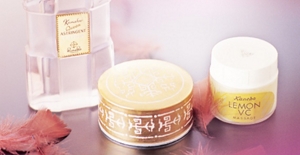
1952
QUEEN EAU DE COLOGNE
Almost all moisturizing lotions produced in the 1950s are alkaline based. Kanebo changes the trend by developing QUEEN EAU DE COLOGNE, a mildly acidic lotion more compatible with the skin surface.






